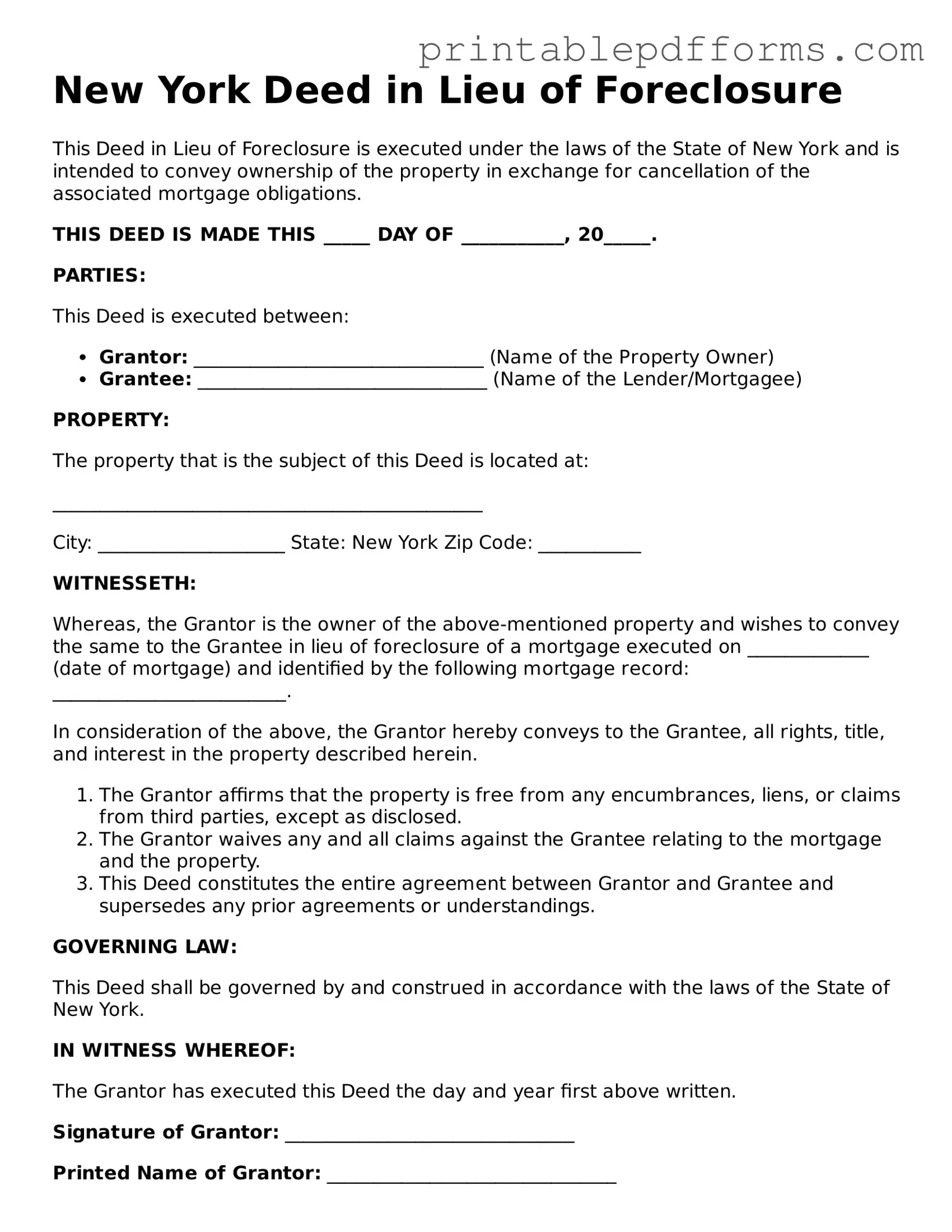New York Deed in Lieu of Foreclosure
This Deed in Lieu of Foreclosure is executed under the laws of the State of New York and is intended to convey ownership of the property in exchange for cancellation of the associated mortgage obligations.
THIS DEED IS MADE THIS _____ DAY OF ___________, 20_____.
PARTIES:
This Deed is executed between:
- Grantor: _______________________________ (Name of the Property Owner)
- Grantee: _______________________________ (Name of the Lender/Mortgagee)
PROPERTY:
The property that is the subject of this Deed is located at:
______________________________________________
City: ____________________ State: New York Zip Code: ___________
WITNESSETH:
Whereas, the Grantor is the owner of the above-mentioned property and wishes to convey the same to the Grantee in lieu of foreclosure of a mortgage executed on _____________ (date of mortgage) and identified by the following mortgage record: _________________________.
In consideration of the above, the Grantor hereby conveys to the Grantee, all rights, title, and interest in the property described herein.
- The Grantor affirms that the property is free from any encumbrances, liens, or claims from third parties, except as disclosed.
- The Grantor waives any and all claims against the Grantee relating to the mortgage and the property.
- This Deed constitutes the entire agreement between Grantor and Grantee and supersedes any prior agreements or understandings.
GOVERNING LAW:
This Deed shall be governed by and construed in accordance with the laws of the State of New York.
IN WITNESS WHEREOF:
The Grantor has executed this Deed the day and year first above written.
Signature of Grantor: _______________________________
Printed Name of Grantor: _______________________________
Signature of Grantee: _______________________________
Printed Name of Grantee: _______________________________
Witnessed by:
_____________________________ (Name of Witness)
_____________________________ (Signature of Witness)
